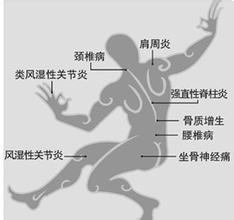▲ 作者:Benjamin J. Matthews、Olga Dudchenko、Leslie B. Vosshall,et al
▲ 链接:
https://www.nature.com/articles/s41586-018-0692-z
▲ 摘要:
埃及伊蚊每年感染4亿多人,能传播登革热病毒、黄热病病毒、寨卡病毒和基孔肯雅热病毒等多种病毒。
由于缺乏高质量的基因组数据,人们在了解蚊子的生物学特性和开发对抗工具方面的进展放缓。
此次,研究人员将各种技术结合起来,生产出显著改进的、完全重新注释的AaegL5基因组集合,并演示了它如何加速了蚊子研究。
研究人员锁定了物理和细胞遗传学图谱,将已知的引导蚊子到人类宿主和产卵位点的化学感受器数量增加了一倍,进一步了解了决定蚊子性别的M位点的大小和组成,并揭示了谷胱甘肽s—转移酶基因变异,而谷胱甘肽s—转移酶基因对杀虫剂抗性至关重要。
研究人员还绘制出登革热病虫媒能力和杀虫剂抗性的新候选基因。AaegL5将促进新的生物学见解和干预策略,以对抗这种致命的疾病载体。
▲ Abstract
Female Aedesaegypti mosquitoes infect more than 400 million people each yearwith dangerous viral pathogens including dengue, yellow fever, Zika andchikungunya. Progress in understanding the biology of mosquitoes and developingthe tools to fight them has been slowed by the lack of a high-quality genome assembly. Here we combine diverse technologies to produce the markedly improved, fully re-annotated AaegL5 genome assembly, and demonstrate how itaccelerates mosquito science. We anchored physical and cytogenetic maps, doubled the number of known chemosensory ionotropic receptors that guide mosquitoes to human hosts and egg-laying sites, provided further insight into the size and composition of the sex-determining M locus, and revealed copy-number variationamong glutathione S-transferase genes that are important for insecticide resistance. Using high-resolution quantitative trait locus and population genomic analyses, we mapped new candidates for dengue vector competence and insecticide resistance. AaegL5 will catalyse new biological insights and intervention strategies to fight this deadly disease vector.
TDP-43 and RNA form amyloid-like myo-granules in regenerating muscle
TDP-43和RNA在肌肉再生过程中形成淀粉样肌粒
▲ 作者:Thomas O. Vogler、Joshua R. Wheeler、Eric D. Nguyen、Kyla A. Britson、Aaron M. Johnson、Bradley B. Olwin、Roy Parker,et al
▲ 链接:
https://www.nature.com/articles/s41586-018-0665-2
▲ 摘要:
神经肌肉疾病(包括肌萎缩性脊髓侧索硬化症和包涵体肌病)的主要组织病理学特征是RNA结合蛋白TDP-43的细胞质聚集。
虽然TARDBP(编码TDP-43的基因)的罕见突变通常会导致蛋白质的错误折叠,但大多数患者并没有出现TARDBP突变。
但野生型TDP-43在大多数患者中以一种未知的机制出现。在这里,研究人员证明TDP-43是正常骨骼肌形成的必要蛋白,在小鼠和人类骨骼肌再生过程中,它能形成肌粒。
肌粒与编码肌节蛋白的mRNA结合,并随着肌纤维成熟而清除。虽然肌粒出现在正常的骨骼肌再生过程中,但肌粒可以在体外播散TDP-43淀粉样纤维,并在包涵体肌病的小鼠模型中增加。
因此,肌粒聚合增加或清除减少可能是神经肌肉疾病中常见的TDP-43聚集物的来源。
▲ Abstract



